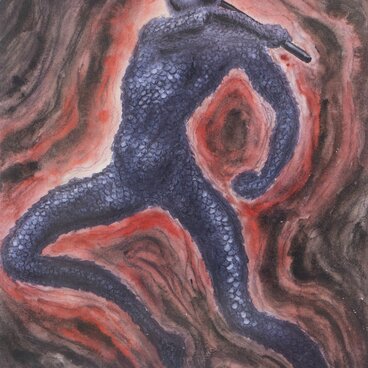Ivan Vasilyevich Yershov was considered one of the best Wagnerian singers of the early 20th century. Yershov had a dramatic tenor, a distinctive appearance, and an outstanding talent for acting. He placed great importance not only on vocals, but also on articulation, expressiveness of speech, and the appearance of his characters — their postures, movements, facial gestures, make-up, and costumes. Throughout his professional life, Yershov strove for verisimilitude and realism of art.
Ivan Yershov’s knife
Время создания
the second half of the 19th century
Место создания
Russia
Размер
31,3x3x2,1 cm
Техника
silver
Коллекция
Выставка
#7
#17
My self, my will, my imagination should always be able to adapt to any sphere of human life.
Ivan Vasilyevich Yershov
#16
Coming from a poor family, Yershov was planning to become an assistant engine driver, however, he was spotted by the pianist Anton Rubinstein who had been told about the talented participant of amateur concerts. After graduating from the Saint Petersburg Conservatory, Ivan Yershov went to study in Italy.
The singer’s debut took place in April 1895 when he performed the role of Faust; that same evening, Feodor Shalyapin made his first appearance as Mephistopheles. Ivan Yershov had leading roles at the Mariinsky Theater for thirty-three years. He was also known as a great chamber singer. His repertoire was extensive and diverse.
Ivan Yershov went down in history as one of the best interpreters of the works of the German composer Richard Wagner. In 1895, the singer sang a part of Tannhäuser in the eponymous play directed by Vsevolod Meyerhold. Ever since then, Yershov was the male lead of the entire group of operas called “The Ring of the Nibelung” and played Tristan, Sigmund, Lohengrin, and Siegfried. In 1929, Yershov appeared on the stage of the Mariinsky Theater for the last time as Otello in the eponymous opera by Giuseppe Verdi.
Ivan Vasilyevich Yershov was awarded a doctorate in musicology and worked as a professor at the conservatory where he taught more than one generation of singers. He was also known as a talented painter and participated in exhibitions. Moreover, Yershov became a member of the academic board at the newly created Museum of Theater and Music.
The museum houses photographs of Yershov, his stage costume, and also the gift that was given to the singer by his admirers — a paper-knife engraved with the musical theme of the “Tannhäuser” opera.
The singer’s debut took place in April 1895 when he performed the role of Faust; that same evening, Feodor Shalyapin made his first appearance as Mephistopheles. Ivan Yershov had leading roles at the Mariinsky Theater for thirty-three years. He was also known as a great chamber singer. His repertoire was extensive and diverse.
Ivan Yershov went down in history as one of the best interpreters of the works of the German composer Richard Wagner. In 1895, the singer sang a part of Tannhäuser in the eponymous play directed by Vsevolod Meyerhold. Ever since then, Yershov was the male lead of the entire group of operas called “The Ring of the Nibelung” and played Tristan, Sigmund, Lohengrin, and Siegfried. In 1929, Yershov appeared on the stage of the Mariinsky Theater for the last time as Otello in the eponymous opera by Giuseppe Verdi.
Ivan Vasilyevich Yershov was awarded a doctorate in musicology and worked as a professor at the conservatory where he taught more than one generation of singers. He was also known as a talented painter and participated in exhibitions. Moreover, Yershov became a member of the academic board at the newly created Museum of Theater and Music.
The museum houses photographs of Yershov, his stage costume, and also the gift that was given to the singer by his admirers — a paper-knife engraved with the musical theme of the “Tannhäuser” opera.
#13
Ivan Yershov as Tristan in the opera “Tristan and Isolde” by Richard Wagner. Staged by Osip Palechek. 1900
#14
Aleksandr Shervashidze. The drawing Ivan Yershov’s costume as Tristan in the opera “Tristan and Isolde” by Richard Wagner. 1909
#15
Ivan Yershov as Tannhäuser in the eponymous by Richard Wagner. Staged by Eduard Nápravník.
#18
Ivan Yershov’s knife
#12
Ministry of Culture of the Russian Federation
читать дальшескрыть
00:00
00:00
1x
Ivan Yershov’s knife
Время создания
the second half of the 19th century
Место создания
Russia
Размер
31,3x3x2,1 cm
Техника
silver
Коллекция
Выставка
Открыть в приложении
Поделиться









